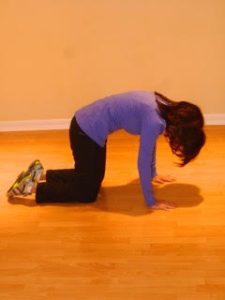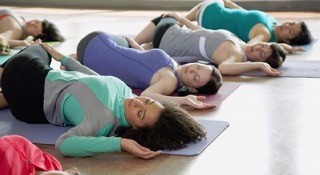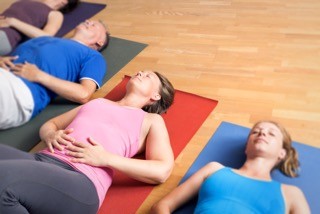Learn about safe exercise choices for individuals who have had chemotherapy so you can be ready to help people who really need it. If possible, an exercise program should be started under the guidance of a personal trainer educated in cancer recovery or a physical therapist. It is advisable for the cancer patient to record the exercise sessions to establish goals and evaluate the benefits of the exercises.
Maintaining an exercise program can help keep weight under control (a risk factor for some cancers) and possibly reduce the risk of recurrence. Two other main reasons for someone to get back in shape after chemo are to increase blood flow to the areas affected by cancer and treatment; and to accelerate the healing process. Learn about other benefits in this article.
Foundations for Exercise After Chemotherapy
As soon as possible after surgery and even during chemotherapy, a cancer patient should start walking and deep breathing. A helpful method of breathing is to have them place their hands on their abdomen, inhale and fill the torso with air, then slowly exhale through the mouth while contracting the abdominal muscles. This can be done while sitting, standing, or lying in bed.
Aerobic exercise at low to moderate intensity is helpful when beginning an exercise program. This can be accomplished in one session of 30-45 minutes or broken up into smaller sessions according to fatigue level.
Flexibility of the affected area can be compromised after cancer surgery and treatments. Have them perform flexibility stretches 1-3 times per day. At first, have your client hold each stretch for 5-10 seconds and gradually work up to performing 5-10 reps.
Exercises to Choose From for Cancer Survivors
The Arch and Curl: In supine position, press the shoulders into the floor and arch the middle back off the floor. Hold for 3 seconds, and then press the abdominals to the floor, allowing the shoulders to come off the floor.
Standing Cat Stretch: Standing with feet a little wider than shoulder width apart, bring your arms forward, bend your knees and arch your back, pulling your navel toward your spine and tucking your chin to your chest. Slowly unfold from this position and reverse the arch in your back, gently lifting your chest and chin toward the ceiling and extending your arms out behind you
Alternating Reach: Reach up as high overhead as you can with one arm, while holding the opposite arm at your waist, hand closed in a fist. Reverse to reach up with the opposite arm. Repeat the alternating reach, trying to stretch a little bit farther with every reach
Rope Climbing: Imagine that you are holding on to a rope that is hanging from the ceiling in front of you. “Grip” the rope with one hand overhead and one hand in front of your waist. Reach as high as possible with the top hand, allowing your torso to lean slightly to the side as you stretch up to “grab” the rope as high as possible. Reverse to “grab” the rope with the opposite hand. Continue “climbing,” trying to reach a little higher with each stretch
Side Stretch: Raise one arm straight up overhead. Hold on to that arm below your wrist with the opposite hand. Tilt gently to the side, maintaining your arm position. Return to center and repeat on the opposite side.
Knee drop: Lie flat on your back with your knees bent and your feet flat on the floor. Bring your hands behind your head with your elbows flat against the floor. Pull your knees toward your chest, then slowly drop your knees over to one side while maintaining the position of your upper body. Hold this stretch through a cycle of relaxation breathing, then bring your knees back to center and reverse. Only lower your knees as far as they can go to one side without twisting your lower back off the floor.
Stretching Rack: Lie flat on your back with your legs fully extended in front of you, and your arms fully extended overhead. Imagine that someone is pulling on your feet and on your hands at the same time, stretching them as far from the center of your body as possible. Reach as far as you can, then hold the stretch through two cycles of relaxation breathing: breathe in for 5 seconds, breathe out for 5 seconds, and repeat.
This lengthening stretch helps with opening up the spaces between your vertebrae to decompress your spine and take pressure off your lower back. You will also be stretching areas that may have a build-up of scar tissue. This stretch will assist with the softening and breaking down of that scar tissue as well.
Child’s pose: Kneel on the floor, then sit on your heels and separate your knees about as wide as your hips while keeping your toes touching together. Lean your belly down between your thighs and reach your arms straight out in front of you, simultaneously pulling your arms and hips in opposite directions. Press your hands in to the floor and hold the stretch through at least one cycle of relaxation breathing. Slide your hands out to a wider position and hold this stretch through at least one cycle of relaxation breathing.
Cat stretch: Begin on your hands and knees in a table top position. Make sure your knees are directly below your hips, and that your wrists, elbows and shoulders are in line with each other. As you inhale, lift your chest toward the ceiling, press your belly toward the floor and lift your head. As you exhale, round your spine toward the ceiling and lower your head toward the floor.

Torso Stretch: Lie flat on your back with your legs extended and arms open to the side. Slowly lift one leg toward the ceiling until it is perpendicular, then lower it across your body toward the floor. Hold the stretch through a cycle of relaxation breathing, then slowly raise the extended leg back toward the ceiling, lower it back to its starting position, and reverse. Try to keep your upper body still throughout the stretch and press your shoulder blades to the floor.

Pelvic tilt: Lie on your back with your knees bent and your feet flat on the floor. Inhale and fill your torso with air. Exhale while pressing your abdominals downward, bringing your navel to your spine. Lower and repeat for 5-10 reps.

Bridge: Lie on your back with your knees bent and your feet flat on the floor. Squeeze your glutes to lift your pelvis and ribs off the ground, leaving only your shoulders on the floor. Hold the bridge position for a few seconds, then lower and repeat. Complete 5-10 reps

Bird dog: Begin on your hands and knees in a table top position. Make sure your knees are set directly below your hips, that your wrists, elbows and shoulders are in line with each other, and your head is in a neutral position. Contract your abdominals to maintain your balance while you slowly extend one leg directly behind you and simultaneously extend the opposite arm out in front (1). Hold for 10 seconds, then return to table-top position and reverse. When your balance is ready for a challenge, perform the exercise as described, then carry the extended arm out to the side (2) and then back to the front before returning to table top position.
Do you have clients recovering from chemotherapy? Come chat with Carol, our cancer fitness specialist to ask your questions. Or, share your inspiring client story with us!
Check out our Cancer Recovery Specialist Course to get more ideas on how to understand and safely help this population.
If you’re NFPT Certified join the community.
Carol is a nationally recognized, highly educated cancer exercise specialist and consultant and has been a fitness professional for more than 20 years. She is the 2016 Idea Personal Trainer of the Year recipient. Check out the course that she worked with NFPT to develop: Cancer Recovery Specialist.

